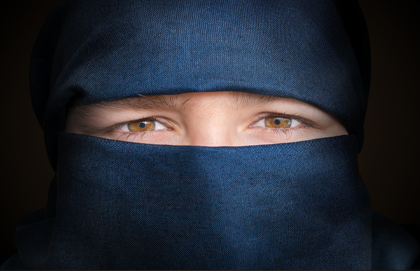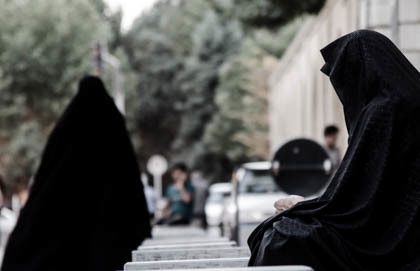Quebec’s Bill 62 banning the niqab in places of public service is as absurd as teaching ancient Persian to a passel of penguins.
But then, so is the whole Canadian conversation around the body coverings favored by relatively recent arrivals from primarily Islamic majority countries. Listening to it with a mind firmly open to all sides, I’m reminded of a den of bobcats being trained to play the bagpipes by being pulled backwards through a vacuum cleaner. It’s overwhelmingly howl and yowl, very minimally any good intentions to identify the problem and settle the differences.
Part of the problem, of course, is that it epitomizes the old saw of a solution in search of a problem. According to a recent BuzzFeed report quoting a Université du Québec á Montreal researcher, Frédéric Castel, there are only 50 to 100 women in Quebec who wear the niqab.
Sound too low? Okay, multiply it by 10, and you get 500 to 1000 niqab wearers in the province. At its maximum, that is .66 per cent of Quebec’s estimated 150,000 Muslim women. It’s .0125 per cent of the total population of Quebec. And that’s inflating the number by 10 times the most reliable estimates. That required passage of legislation in the National Assembly? Absurdity doesn’t begin to cover it.
Neither does it obscure, however, the fundamental absurdity of the niqab in a Canadian social context. As a garment worn in public, it is absurd in the way men’s leisure suits of the 1970s were absurd, or the way women wearing their underwear outside their clothing in the late ’90s and early 2000s was absurd. True, a fashion statement of sorts is being made, but not one you’d want to be quoted on a very few years later.
The main drawback of the niqab in that regard is it proposes exactly the opposite of what its occupant appear to think it’s saying. Ostensibly, those adorned in niqabs are motivated by modesty. But in a Canadian context, they are so stunningly unusual that their effect is to attract rather than diminish attention. Far from hiding the person wearing one in plain sight, the niqab elicits double takes, rubber necking, and averted eyes to an extent normally associated with nothing short of public nudity. Indeed, the reason so few Muslim women wear the niqab might be precisely to avoid the kind of ogling, oohing and ahhing it attracts.
It’s nonetheless preposterous to argue that because the majority of Muslim women eschew the niqab, the State therefore has some business interfering in the haberdashery choices of those who prefer it. It does not. We are not yet quite so far gone in our loss of basic human freedoms that political panjandrums and bureaucratic busybodies can peremptorily decide for us the cut, shape, texture, draping or placement of fashion choices on our own bodies. In a country where bodily autonomy is deemed so sacrosanct that women can willy-nilly abort their babies, or invalids can insist the State medically terminate them, it is absurd beyond words to insist that we must abdicate control of our hats.






